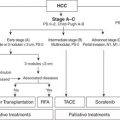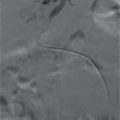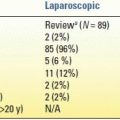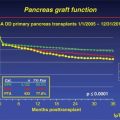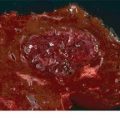Division of the bile canaliculi from the bloodstream is required to protect the biliary system from pathogen invasion by the vascular system, and vice versa. This extraordinary property is provided by the hepatic tight junctions. These junctions are able to build a barrier between the biliary channels and hepatic sinusoids. The liver is the core metabolic center in humans and is responsible for fundamental physiologic functions including fatty acid, amino acid, and carbohydrate metabolism; bile secretion; and detoxification. Because of the highly vascularized nature of the liver and its hepatocytes, a microvascular network is maintained in place by the hepatic tight junctions. Deregulation of tight junction expression dismantles the parenchymal network, causing liver disease and malignant transformation. Hepatic tight junctions also represent a physical barrier within the liver preventing ascending biliary infection. Any obstruction of the portal vein, pre-, intra- or posthepatic, will cause portal hypertension with the development of portosystemic shunts. Those shunts will bypass the liver parenchyma and will allow the toxins and enteric pathogens to reach the systemic circulation.
Additional physical features of the hepatobiliary system serve to prevent ascending infection. Specifically, the sphincter of Oddi that prevents reflux of enteric content into the biliary tree when bile flows antegrade into the duodenum represents a dynamic physical barrier against ascending biliary infection. After cholecystectomy, there may be a decreased force of antegrade bile flow due to the loss of gallbladder contraction with retrograde reflux of enteric contents leading to colonization of the biliary tree. In addition, any surgical or endoscopic intervention on the biliopancreatic sphincter (e.g., sphincterotomy, placement of endobiliary stent, or creation of a biliary–enteric bypass) leads to loss of this physical barrier, permitting direct reflux of enteric content into the biliary tree. The mere presence of bacteria in the bile does not always lead to infection; however, in the setting of distal obstruction one must watch closely for signs and symptoms of an ascending infection.
The second protective element in the host defense mechanisms is the chemical component. Specifically, the presence of bile salts in the bile provides an excellent protection against enteric pathogens possessing both bacteriostatic and bactericidal properties. Jaundice due to mechanical obstruction of the bile duct leads to overgrowth of intestinal flora due to the absence of bile and bile salts within the gastrointestinal tract, predisposing patients to develop cholangitis when the obstruction is treated with endobiliary or surgical decompression. Fungal contamination of the bile is commonly observed in patients with biliary obstruction. This fungal colonization is secondary to the absence of bile salts that also possess antifungal properties, particularly against Candida albicans species.
The third protective element is the immunologic and humoral component. The liver parenchyma contains several immunologic active cells whose function is to alter and metabolize toxins coming from the gastrointestinal tract. Kupffer cells represent the largest population of tissue macrophages. Kupffer cells possess Fc, C3, and scavenger receptors that are known to phagocytize a wide variety of both opsonized and nonopsonized materials including bacteria and bacterial products. In addition, Kupffer cells play a defined role in bilirubin metabolism, controlling infections in the biliary system. Approximately 75% of bilirubin is derived from the breakdown of senescent erythrocytes by macrophages. Two isoenzymes HO-1 and HO-2 are involved in this process. HO-1, also known as heat shock protein-32, is induced by stressors and is contained in the endoplasmic reticulum and perinuclear envelope of Kupffer cells in the liver. Overall, Kupffer cells are responsible for the removal of senescent erythrocytes from the blood circulation by scavenger receptors. Depletion of Kupffer cells in the liver reduces HO-1 expression and bilirubin production, predisposing to a variety of biliary infections. Liver resections also reduce the presence of Kupffer cells and therefore reduce their immunologic effects in the liver initially following resection. Immunoglobulin A (IgA), as part of the humoral component, is produced and secreted into the hepatic system by the gallbladder and intra- and extrahepatic biliary epithelium protecting against infectious pathogens. In addition, complement C3 and C4, factor B, and fibronectin play a major role in opsonizing pathogens and helping the biliary system to defend itself from the continuous exposure to pathogens. Any alteration of these defense mechanisms predisposes to colonization and development of infection in the hepatobiliary system (Table 22.1).
BILIARY OBSTRUCTION
The etiology of biliary obstruction can be secondary to intrinsic causes like cholangiocarcinoma, choledocholithiasis, or ampullary stenosis, extrinsic causes like periampullary or pancreatic neoplasia or pancreatitis involving the distal portion of the bile duct, or functional causes such as sphincter of Oddi dysfunction. The use of endobiliary stents can often resolve the obstruction, but predisposes the patient to develop biliary infection due to the communication this creates with the gastrointestinal tract. In the presence of biliary obstruction, the lack of bile flow is considered to be a primary cause of bacterial overgrowth in the biliary system. Likewise, obstruction leads to biliary hypertension with subsequent breaking down of the hepatocyte tight junction and development of cholangiovenous reflux. This phenomenon allows the gastrointestinal endotoxins to colonize the biliary–portal system and can lead to the formation of pyogenic liver abscesses or biliary sepsis. The absence of bile salts with their bacteriostatic and bacteriocidal properties, which occurs in the setting of biliary obstruction, leads to an increase in the number of enteric pathogens in the intestinal tract.
No one clearly delineated mechanism defines how biliary obstruction specifically predisposes one to infectious complications. One theory suggests that Kupffer cell metabolism is diminished in the presence of biliary obstruction. This leads to bacterial overgrowth with inability of the existing Kupffer cells to clear the bacteria and bacterial products adequately. Bacteria can then translocate to the systemic circulation through the hepatic–sinusoid tight junctions. In addition, IgA production is limited by biliary obstruction. Clinically, the presence of bacteria in the biliary tree does not translate into cholangitis, but the combination of biliary obstruction and increased pressure in the biliary system determines a cascade of events that can often lead to acute cholangitis.
INFECTIONS IN BILIARY SURGERY
Human bile is typically sterile but may become infected in the presence of gallbladder and common bile duct stones or intrinsic or extrinsic inflammatory or neoplastic diseases leading to obstruction. The pathophysiology of infection is due either to translocation of intestinal pathogens via the portal system or more commonly due to biliary intervention with incomplete drainage. Any invasive endoscopic, radiologic, or surgical procedure on the hepatobiliary system interferes with the usual host defense mechanism, and the introduction of an indwelling biliary stent through any means constitutes a foreign body within the biliary system. Biliary–enteric anastomosis, sphincterotomy and sphincteroplasty, disruption of blood supply either locally to the liver and biliary tree or systemically (shock), blood transfusions, and the immune status of the patient are all additional important contributors to the development of an ascending biliary infection.
Stay updated, free articles. Join our Telegram channel

Full access? Get Clinical Tree



